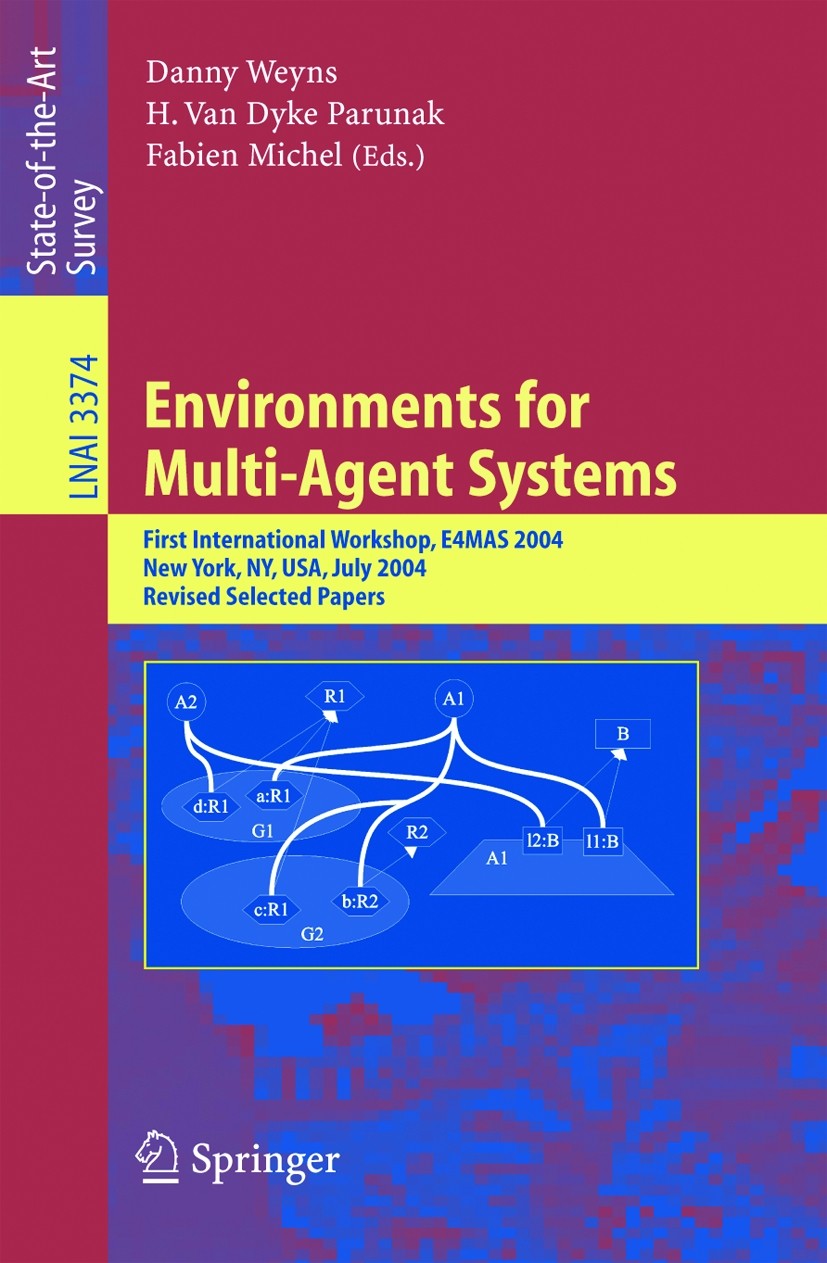| 書目名稱 | Environments for Multi-Agent Systems |
| 副標(biāo)題 | First International |
| 編輯 | Danny Weyns,H. Dyke Parunak,Fabien Michel |
| 視頻video | http://file.papertrans.cn/314/313016/313016.mp4 |
| 叢書名稱 | Lecture Notes in Computer Science |
| 圖書封面 |  |
| 描述 | The modern ?eld of multiagent systems has developed from two main lines of earlier research. Its practitioners generally regard it as a form of arti?cial intelligence (AI). Some of its earliest work was reported in a series of workshops in the US dating from1980,revealinglyentitled,“DistributedArti?cialIntelligence,”andpioneers often quoted a statement attributed to Nils Nilsson that “all AI is distributed. ” The locus of classical AI was what happens in the head of a single agent, and much MAS research re?ects this heritage with its emphasis on detailed modeling of the mental state and processes of individual agents. From this perspective, intelligenceisultimatelythepurviewofasinglemind,thoughitcanbeampli?ed by appropriate interactions with other minds. These interactions are typically mediated by structured protocols of various sorts, modeled on human conver- tional behavior. But the modern ?eld of MAS was not born of a single parent. A few - searchershavepersistentlyadvocatedideasfromthe?eldofarti?ciallife(ALife). These scientists were impressed by the complex adaptive behaviors of commu- ties of animals (often extremely simple animals, such as insects or even micro- ganisms). T |
| 出版日期 | Conference proceedings 2005 |
| 關(guān)鍵詞 | AI agents; ALife; ALife agents; adaptive agents; agent communication; agent environments; artificial intel |
| 版次 | 1 |
| doi | https://doi.org/10.1007/b106134 |
| isbn_softcover | 978-3-540-24575-9 |
| isbn_ebook | 978-3-540-32259-7Series ISSN 0302-9743 Series E-ISSN 1611-3349 |
| issn_series | 0302-9743 |
| copyright | Springer-Verlag Berlin Heidelberg 2005 |
 |Archiver|手機(jī)版|小黑屋|
派博傳思國際
( 京公網(wǎng)安備110108008328)
GMT+8, 2025-10-23 10:21
|Archiver|手機(jī)版|小黑屋|
派博傳思國際
( 京公網(wǎng)安備110108008328)
GMT+8, 2025-10-23 10:21


